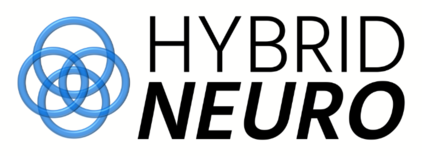The Wonderful World of Muscles and Muscle-Machine Interfaces

Muscles enable us to move, breathe, and perform various tasks. They are crucial for maintaining metabolism and body weight, play a significant role in maintaining posture, and assist in regulating body temperature. We use muscles to communicate with our environment, both verbally and non-verbally.
Muscles translate and amplify electrical commands from the brain's centers, making them suitable for advanced human-machine communication. To capture the electrical activity of muscles, we don't need invasive methods; it can be detected non-invasively on the skin's surface above a muscle. By applying computer algorithms to the captured data, we can assess a user's level of fatigue, stress, or effort during a movement. This allows for objective evaluation of rehabilitation or training effectiveness and monitoring of muscle aging.
The recorded electrical activity of muscles can also reveal surprising possibilities. For example, it can be used to control a virtual third arm. Curious about how? Join us in exploring the fascinating world of muscles and discover the potential of advanced muscle-machine interfaces, which can be integrated into wristbands, clothing, or smart furniture.
![]()
The HybridNeuro project is funded by the European Union under the Horizon Europe framework program (Contract No. 101079392) and the UK Government's Innovation and Research Guarantee Scheme (UKRI) for Horizon Europe funding (Contract No. 10052152).
Project presentation
THE WONDERFUL WORLD OF MUSCLES AND MUSCLE-MACHINE INTERFACES, DR. ALEŠ HOLOBAR
Saturday, April 20th, at 3:00 PM
Muscles allow us to move, breathe, and perform various tasks. They are essential for maintaining metabolism and body mass, playing a crucial role in posture and regulating body temperature. Muscles enable us to communicate with our environment, both verbally and non-verbally. They translate and amplify electrical commands from the brain, making them useful for advanced human-machine communication. Non-invasive methods are used to capture muscle electrical activity, which can be detected on the skin's surface above individual muscles. Using computational algorithms, we can assess levels of user fatigue, stress, or effort during movements. This technology allows us to objectively evaluate rehabilitation or training effectiveness and monitor muscle aging. The recorded electrical activity of muscles also holds surprises, such as controlling a virtual third arm. Curious about how this works? Join us to explore the fascinating world of muscles and discover the capabilities of advanced muscle-machine interfaces, which can be integrated into wristbands, clothing, or smart furniture. The HybridNeuro project is funded by the European Union through the Horizon Europe framework program (contract No. 101079392) and the UK Government’s Innovation Funding Scheme for Horizon Europe (contract No. 10052152).


